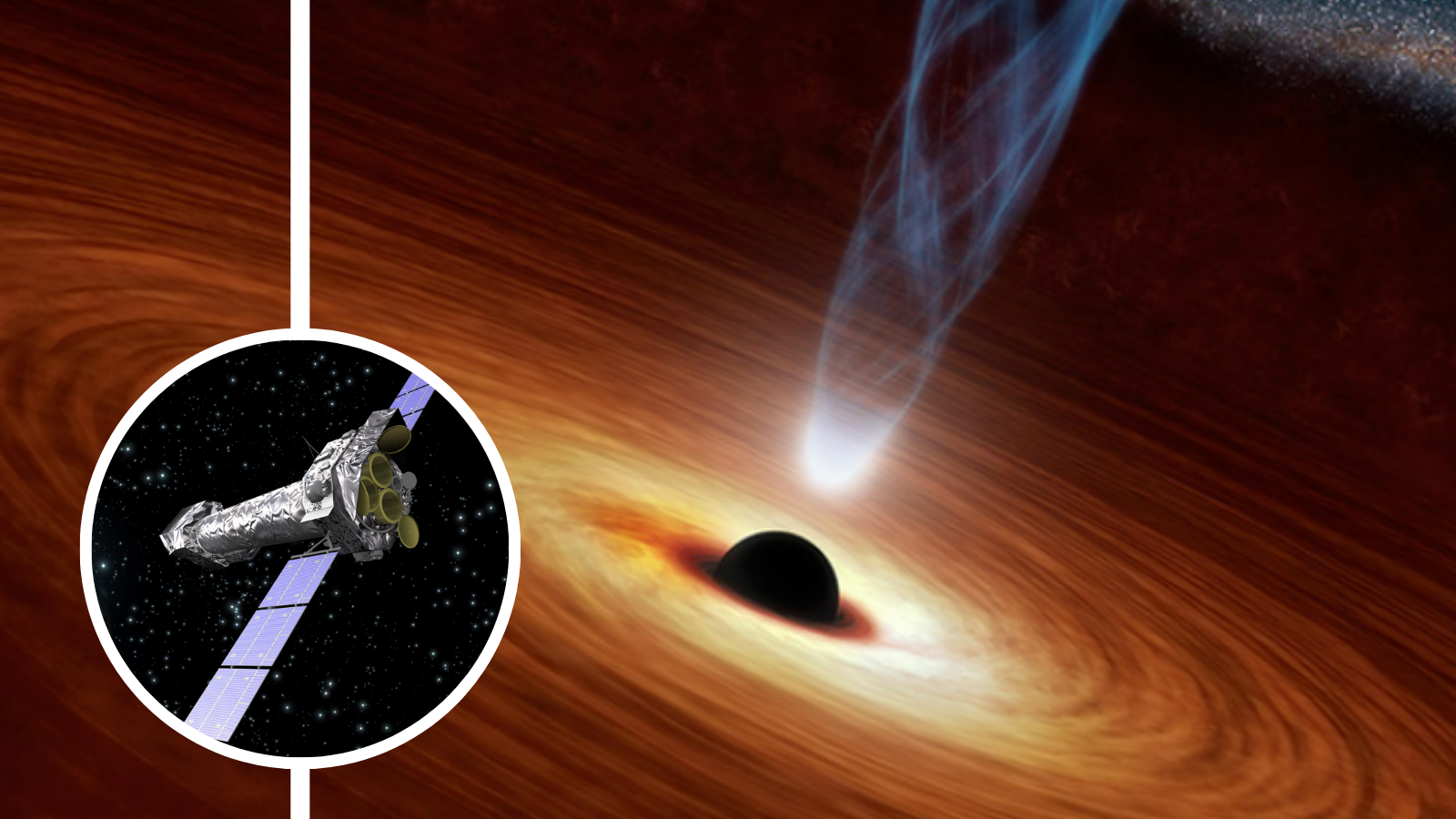This supermassive black hole 'burps' matter at an incredible speed
Published by Adrien,
Source: Monthly Notices of the Royal Astronomical Society
Other Languages: FR, DE, ES, PT
Source: Monthly Notices of the Royal Astronomical Society
Other Languages: FR, DE, ES, PT
Follow us on Google News (click on ☆)
Astronomers used ESA's XMM-Newton space telescope to study PG1211+143, a black hole 40 million times more massive than the Sun. This giant consumes the equivalent of 10 Earth masses in just five weeks—a cosmic feast that doesn't come without consequences.

A supermassive black hole 'burping' high-speed jets of matter. Credit: NASA/JPL-Caltech/ESA
The black hole's frenzied consumption of matter creates accretion disks—structures where gas and dust swirl before being devoured. However, this voracity has its limits, causing matter to be ejected at nearly 30% the speed of light.
These ejections, observed with a delay of a few days after absorption, heat the surrounding environment to several million degrees. This phenomenon could explain how black holes influence star formation in their host galaxies.
The researchers, led by Ken Pounds from the University of Leicester, published their findings in Monthly Notices of the Royal Astronomical Society. Their work opens new perspectives on galaxy evolution under the influence of supermassive black holes.
How can a black hole 'burp' matter?
When a black hole consumes matter at a breakneck pace, it can reach a saturation point. The excess matter is then ejected in the form of high-speed jets—a phenomenon often compared to a cosmic 'burp.'
These jets are propelled by magnetic forces and radiation pressure generated near the black hole. They can travel immense distances, influencing their galactic surroundings.
Studying these ejections helps scientists better understand the mechanisms of accretion and ejection around black holes. It also reveals how these cosmic giants shape galaxy evolution.